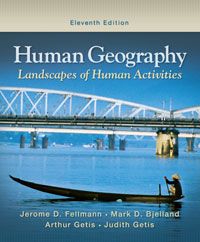1.
A) folk B) tribal C) ethnic D) popular 2.
A) True B) False 3.
A) True B) False 4.
A) geopolitical region B) functional region C) uniform region D) nodal region 5.
A) hierarchical diffusion and contagious diffusion B) relocation diffusion and expansion diffusion C) cascade diffusion and relocation diffusion D) contagious diffusion and expansion diffusion 6.
A) hogan B) plank house C) pueblo D) mound house 7.
A) True B) False 8.
A) Chesapeake Bay B) Southern New England C) Delaware Valley D) Lower St. Lawrence Valley 9.
A) Germans B) Swedes C) English D) Finns 10.
A) upright-and-wing B) New England large C) saltbox D) garrison 11.
A) Chesapeake Bay B) Southern Tidewater C) Delaware Valley D) Mississippi Delta 12.
A) contagious and cascade B) hierarchical and relocation C) relocation and expansion D) cascade and hierarchical 13.
A) True B) False 14.
A) vernacular housing B) tools C) transportation vehicles D) foods and music 15.
A) True B) False 16.
A) hierarchical diffusion B) relocation diffusion C) cascade diffusion D) expansion diffusion 17.
A) Great Lakes B) Great Smoky Mountains C) Ohio Valley D) Missouri Valley 18.
A) Canada B) United States C) Mexico D) Greenland 19.
A) True B) False 20.
A) assimilation B) cultural lag C) acculturation D) transculturation 21.
A) proverbs B) prayers C) superstitions D) all of the above E) none of the above 22.
A) True B) False 23.
A) traditional and rural B) urban and traditional C) faddish and ever-changing 24.
A) True B) False 25.
A) True B) False 26.
A) Corn Belt B) Bible Belt C) Sunbelt D) all of the above 27.
A) placelessness. B) globalization. C) delocalization. D) unpopular culture. 28.
A) Charleston single house. B) shotgun house. C) Dutch House. D) hogan. 29.
A) milk. B) rum. C) vodka. D) whiskey. 30.
A) a cultural trait. B) a cultural complex. C) a cultural region. D) a cultural realm. 31.
A) globalization. B) glocalization. C) localization. D) the vernacular.





